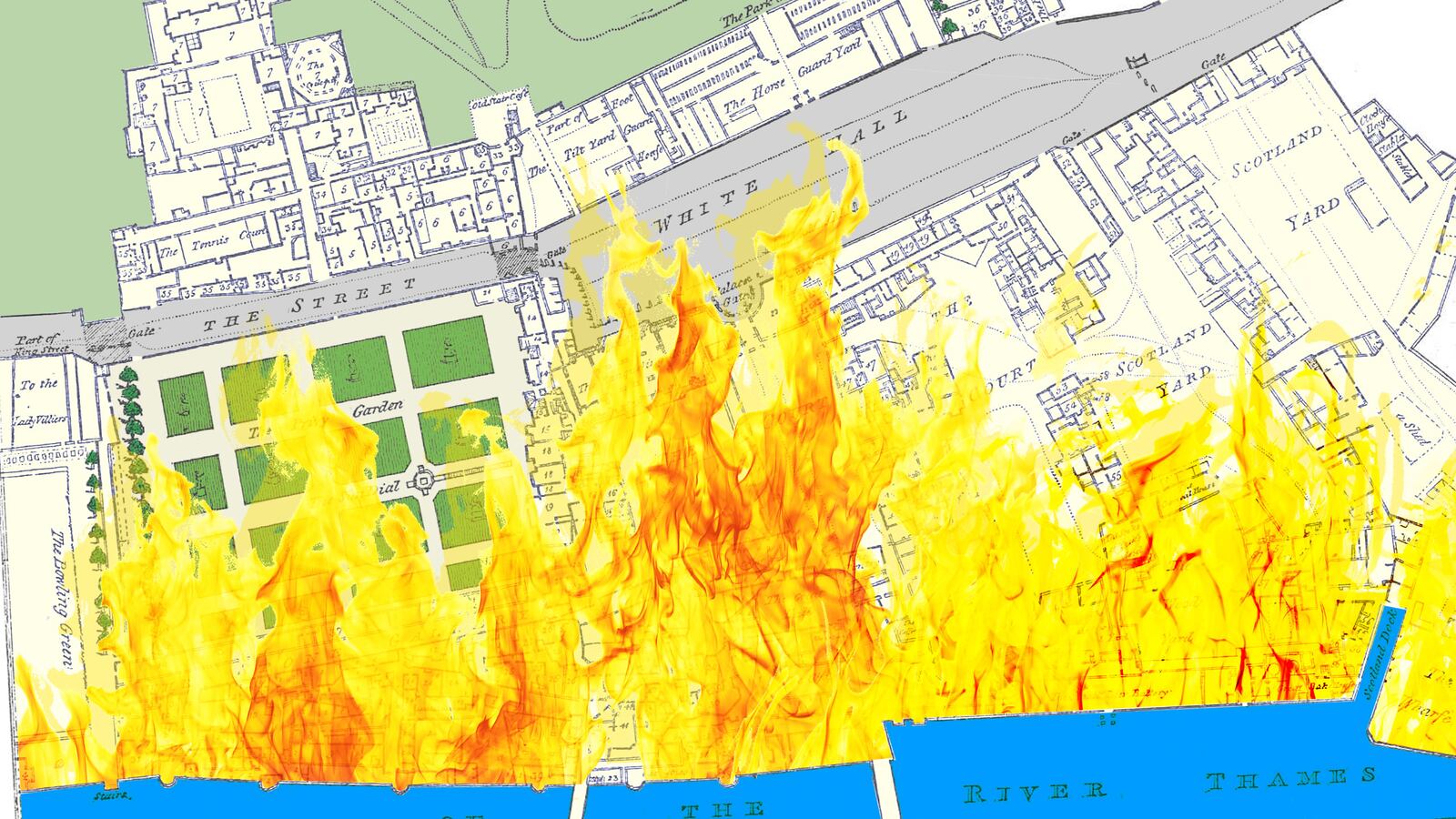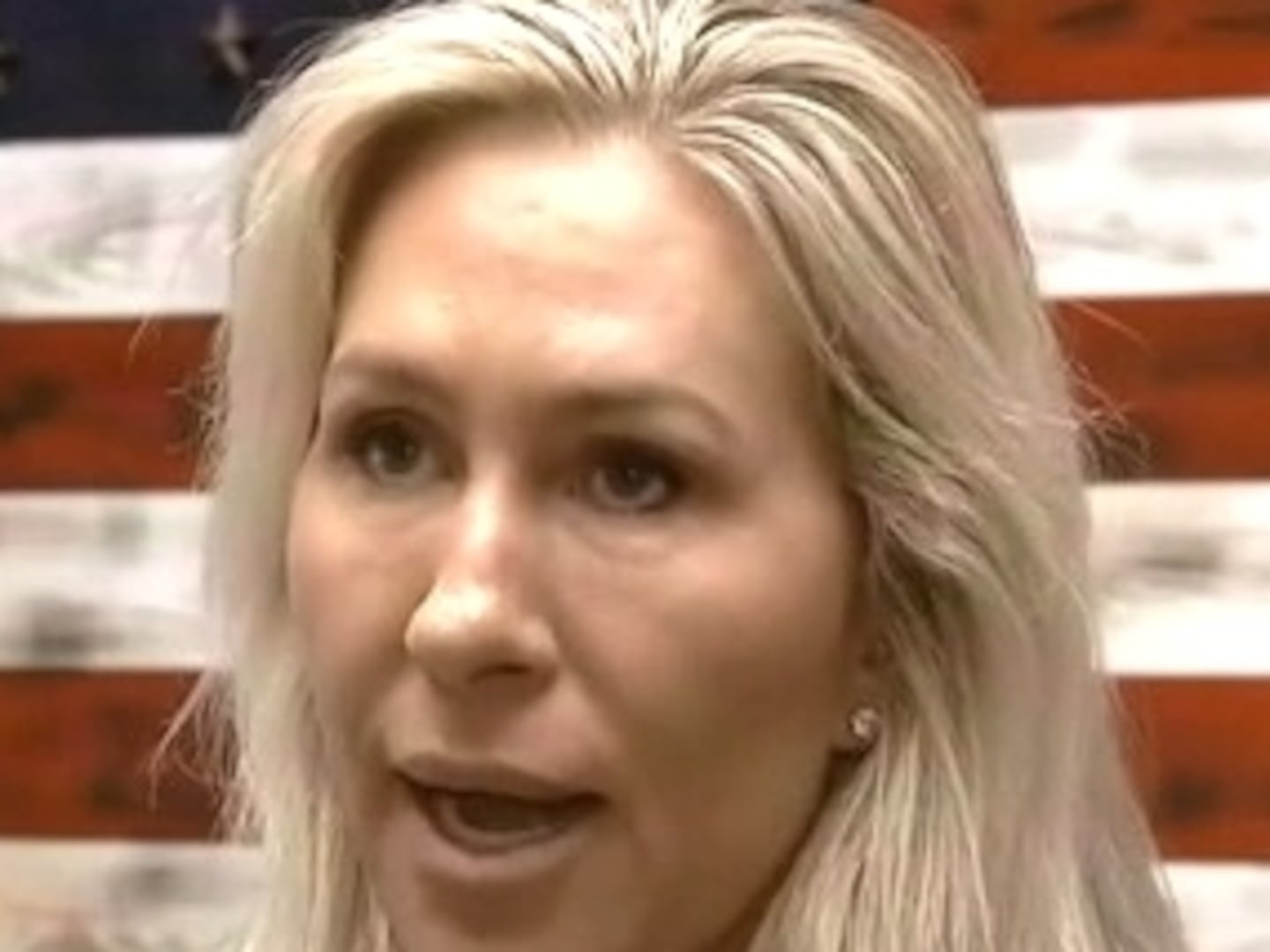If all eyes this weekend have been on St. George’s Chapel, Windsor, for the wedding of Meghan Markle and Prince Harry, one formerly impressive location was off the table as a setting for the nuptials.
For over a hundred years, starting in the 16th century, Whitehall Palace was the seat of the Tudor and Stuart monarchies, not to mention the site of many of their most notorious antics.
The royal residence was nothing if not a show of power, being the largest palace in all of Europe for a time, although its architectural ramblings didn’t impress everyone (a French visitor once described it as a “heap of houses”). But who needs to impress the critics when you can cow your friends and enemies with sheer size?
Until January 1698, that is, when the “they’re just like us” truth of royal castles was proven apt as Whitehall Palace burned mostly to the ground.
The story of the royal crowning of Whitehall is the stuff of haunted fairy tales: a consigliere of the king falls out of favor and loses his life and his home to the power-hungry monarch.
In this case, it was Cardinal Wolsey who faced a steep fall from grace, and King Henry VIII who “acquired” the dearly departed man’s rather large personal home and turned it into the seat of power of the English monarchy.
The palace sat on the Thames in the Westminster neighborhood of London and was originally known as York Place. As early as 1245, the residence served as the not-so-humble home for whichever man was currently occupying the position of Archbishop of York.
In 1514, that religious honor fell to Cardinal Wolsey. Wolsey had been a capable religious leader and administrator who steadily made his way up the church ranks. But when Henry VIII came to power, he saw his chance for glory and he went for it.
Shortly after taking the position on Aug. 5, 1514, Wolsey moved into York Place. The soon-to-be cardinal wasn’t a man known for letting God get between him and the finer things in life, and almost immediately after moving in, he began making improvements and planning to expand his holdings.
According to Simon Thurley in Whitehall Palace: An Architectural History of the Royal Apartments, the list of renovations Wolsey made early in his tenure included (but were certainly not limited to) constructing a great chamber, modernizing his personal privy chamber, and building a new grand staircase between the two floors.
He built a chapel, extensive gardens, and a wine cellar, among many other practical and decorative spaces. Wolsey also began to acquire land adjoining his property with an eye toward expansion.
The king was no stranger to the cardinal’s domain. York Place was the site of many a masked ball and evening of entertainment, and the king was a frequent visitor. It would play such a large role in his life that Shakespeare would used the mansion as the setting for a scene in Henry VIII.
On just one night in October 1518, the royal entourage ended up at York Place after an evening celebrating the declaration of peace among most major European nations.
As the papers from the reign of Henry VIII detail, there “they sat down to a most sumptuous supper, the like of which was never given either by Cleopatra or Caligula. The banqueting hall was so decorated with huge vases of gold and silver, that [the Venetian diplomat Sebastian Giustinian] fancied himself in the tower of Chosroes, where that monarch caused divine honours to be paid him.”
But in Wolsey’s attempt to take nesting to a new level and rebuild York Place into his own personal palace, he may have lost sight of the fact that his power was a delicate affair.
Yes, he was a man of God whose authority, in theory, came from the heavens. But in reality, he served at the pleasure of the king, and by the end of 1529, that pleasure was beginning to sour.
Henry VIII is now notorious for his propensity to off his wives in his mad pursuit of a male heir. But in the burgeoning years of his reign, these tendencies were just beginning to show and they did not find favor with the church.
When Henry decided that he needed an annulment for his marriage to Catherine of Aragon, the cardinal agreed to try to help him out. But the Vatican would not be swayed.
This failure was Wolsey’s downfall. He was arrested on Nov. 30, 1530, charged with treason, and died later that month en route to his trial. With the Cardinal out of the way, King Henry VIII helped himself to his annulment (courtesy of the creation of his own church) and his former advisor’s lovely home in Westminster.
It didn’t hurt that the vacancy of York Place came at an ideal time. The family quarters in the Palace of Westminster, their previous home, had been largely destroyed in a fire several years earlier, and the royal family was in something of a residential limbo.
York Place was spacious, newly remodeled (although that wouldn’t stop the king and his heirs from making their own improvements), and now available.
Along with greatly expanding the footprint of the space during his tenure, the king also made it something of a pleasure palace. He added tennis courts, bowling alleys, galleries for audiences to watch entertainment, a tiltyard, and rings for cockfights.
He gobbled up St. James’ Park and started up the Tudor trend of adding on to their palace in a manner that produced “a mass of brick buildings, erected without any particular scheme just as occasion required, resulting, as Besant declares, in a building ‘without dignity and without nobility,’” as Beatrice Home wrote in Peeps at Royal Palaces of Great Britain in 1913.
“Of all the many palaces of the English monarchs, none is more associated in men’s minds with the splendour and pageantry of Court life than the palace of Whitehall,” Home wrote. “In comparison with other palaces, such as Windsor, its life-story was very brief, just over a century and a half, but it was spent in the heyday of royalty, when the Kings were freed from the power of the great barons, and were not yet controlled by the constitution.”
For over a century, Whitehall Palace became the biggest castle in all of Europe. It witnessed Henry VIII’s marriages to Anne Boleyn and Jane Seymour, and his death in 1547.
It was where Charles I was beheaded and Charles II made his triumphant return, restoring the rule of the Stuarts. In between, it was inhabited by Oliver Cromwell, whose body was hung in the street outside several months after his death and the return of the monarchy.
Whitehall Palace had seen and survived more than its fair share of political tumult and scandal. It had even survived fires that had devastated London in the mid-17th century. But its downfall would prove to be an inattentive Dutch maid.
On Jan. 4, 1698, the maid, whose mistake if not her name has lived on in history, was drying linens over a coal fire in the palace. Some say the linen caught fire and she was unable to put it out before it got out of control, others that, against explicit instructions, she briefly left the fire unattended.
Either way, the result was the same. Some linen went up in flames and the fire quickly spread throughout the palace.
The Enlightenment version of first responders tried everything. They doused the palace with water and tried to blow up portions of it in an effort to prevent the fire’s spread, but nothing worked.
For 14 hours the fire raged on. When the smoke cleared, the home and seat of power of the English monarchy was virtually gone. The only building in the royal “heap of houses” that survived was a banquet hall built by James I.
The future Duke and Duchess (of where is yet to be determined) may not be able to enjoy the rambling quarters of Whitehall when they wed on Saturday. But the legacy of the palace still lives on. Today, the heart of British politics takes place in the Westminster neighborhood of London on a street called Whitehall.






